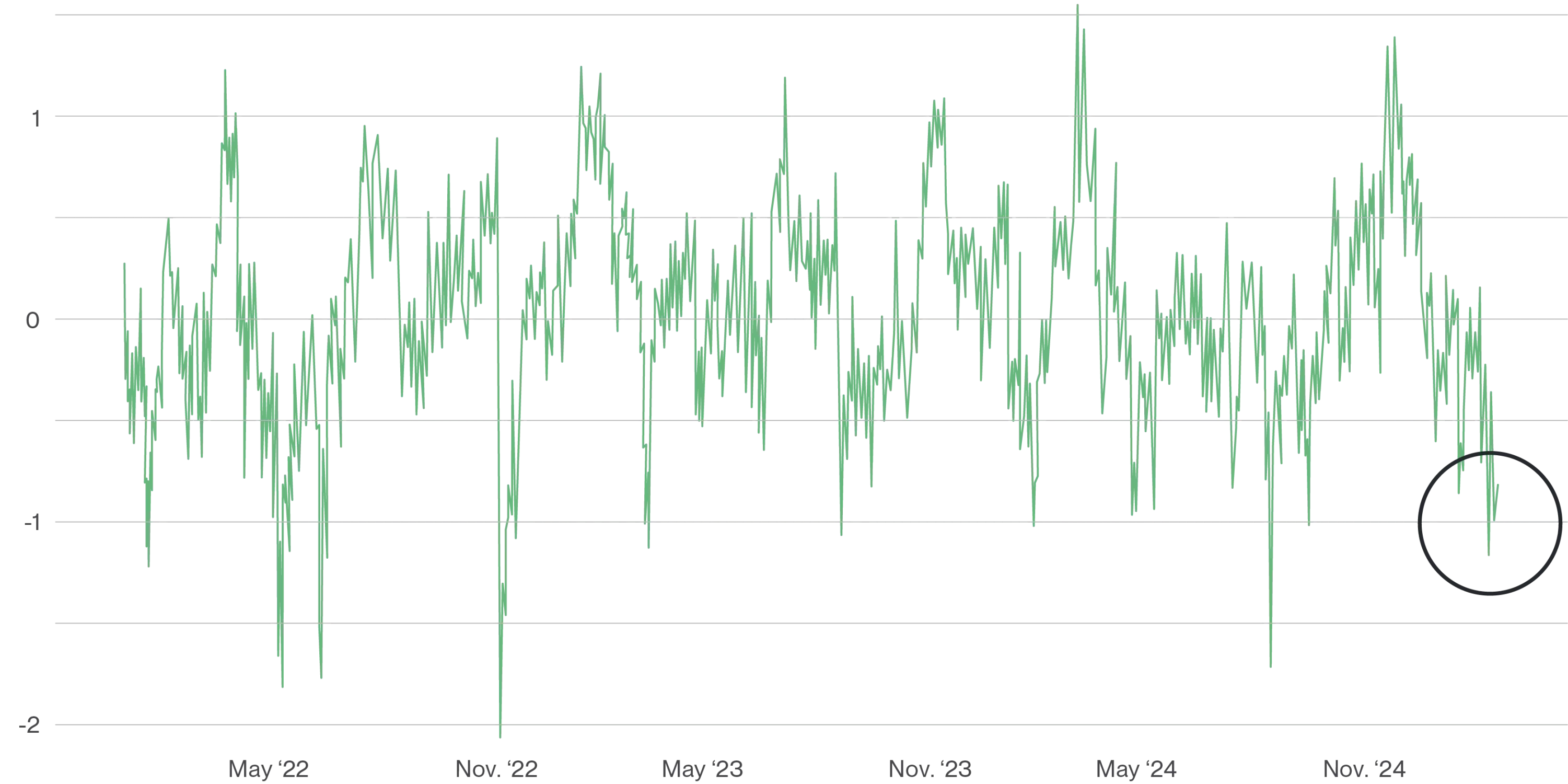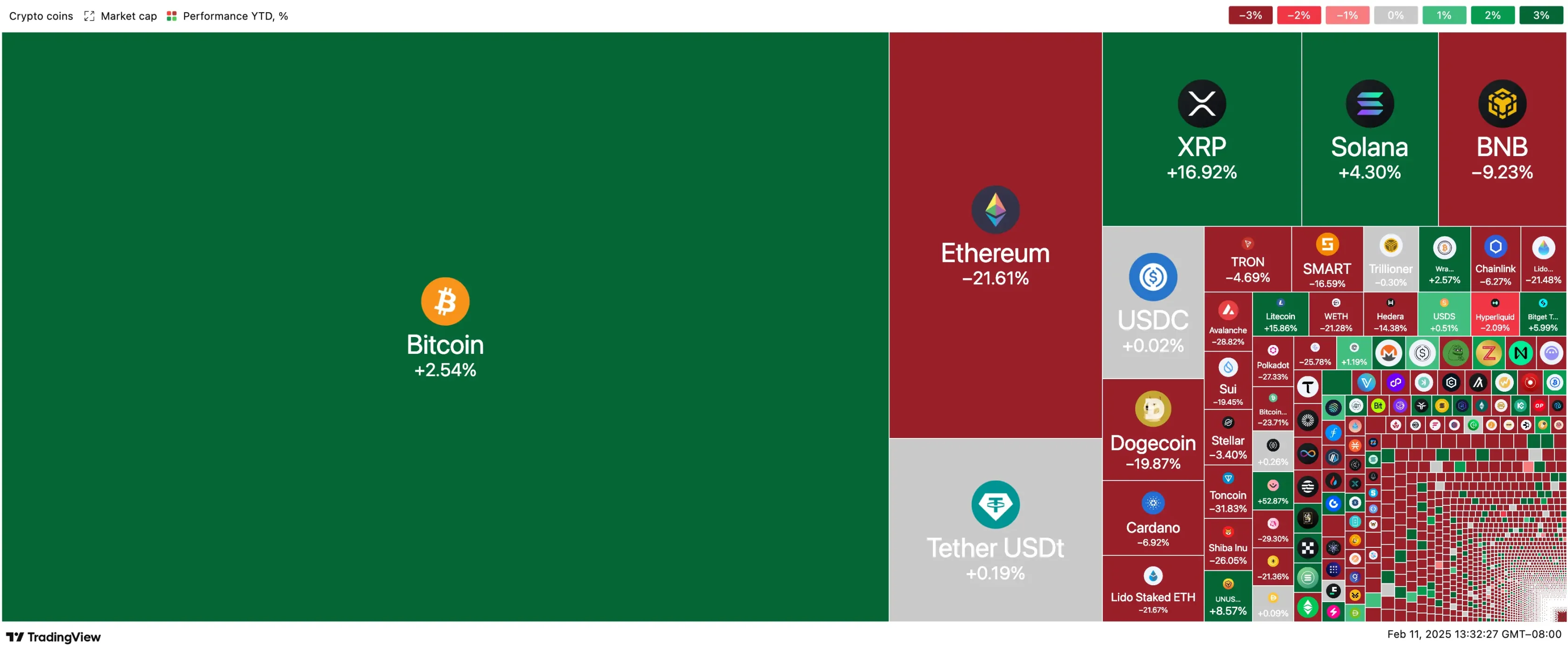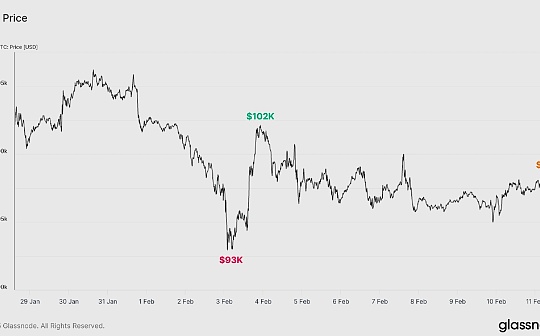Bitwise Chief Investment Officer: Is the Copyright Ji really dead?

Reprinted from panewslab
02/12/2025·2MAuthor: Matt Hougan, Chief Investment Officer, Bitwise
Compiled by: Luffy, Foresight News
Currently, there is an interesting binary phenomenon between institutional investors and retail investors in the cryptocurrency space.
On the one hand, institutional investors are very optimistic about the prospects for cryptocurrencies. Today, when investment professionals look at cryptocurrencies, what they see is: Institutional funds are pouring into crypto markets at an unprecedented scale through trading open-end index funds (ETFs), and Washington has also grown from one of the biggest threats to cryptocurrencies. Transformed into one of the strongest supporters.
Just a year ago, what we could only dream of (such as the country adopts strategic Bitcoin reserves), now seems to be somewhere between possible and about to be realized. And the biggest risks facing cryptocurrencies, such as government bans or legal threats to software developers, have become distant nightmares.
From a risk-adjusted perspective, it can be said that now is the best time to invest in cryptocurrencies in history.
However.
Currently, retail investors are in despair. They seem to live in another parallel reality. We have a proprietary cryptocurrency market sentiment score at Bitwise, which judges crypto investor sentiment by analyzing on-chain data, capital flows and derivatives, which is currently one of the lowest data ever.

Crypto Asset Sentiment Index. Sources: Bloomberg, CoinMarketCap, Glassnode, Nilsson Hedge, Alternative.me and Bitwise Europe.
This is consistent with the atmosphere I feel from "encrypted Twitter" and other emotional indicators on the market.
Retail investors are frustrated because crypto assets outside of Bitcoin (often called "altcoins") perform poorly. The following hotspot chart from TradingView shows the year-to-date returns of all crypto assets. Although there are several highlights, the most obvious of which are Bitcoin, Solana and XRP, they are mostly red in general. So, overall, crypto assets are suffering hard.

Crypto Assets Year-to-Date Return, Source: TradingView. Data as of February 11, 2025
If the analysis time is extended to the past 12 months, the situation has not improved much. Bitcoin has risen 95% over the past year; Ethereum has risen only 2%. Retail investors are keen on speculating on altcoins, and the absence of a "bull altcoin market" has left them feeling depressed.
Then the key question is: Who is right?
Answer: The organization is correct
My intuition tells me that the answer is "institutional investors".
Indeed, it is easy to be optimistic about Bitcoin at the moment. So far this year, ETFs have bought about 47,000 Bitcoins, companies have bought about 57,000 Bitcoins, and the Bitcoin network has only mined about 18,000 Bitcoins. It is not difficult to imagine that this supply and demand dynamic will drive Bitcoin prices to record highs over time.
I also admit that the situation of altcoins is more complicated. At present, there is no major new application that has sparked a huge interest in the crypto space as it did during the 2020-2021 bull market (DeFi bull market) or the 2017-2018 bull market (ICO bull market). The closest bull market in the altcoin sector today is the Memecoin craze, but most investors understand what's going on: a short-term gambling. It’s hard to convince yourself that a new and better world can be built based on Fartcoin or Hawk Tuah token.
But in the long run, I think the layout of altcoins is more stable than ever in history. Altcoins have been in a largely regulatory gray area over the past four years, with the U.S. Securities and Exchange Commission (SEC) claiming that most altcoins are illegal securities issuances. This hinders their use in the real world, making it difficult for large companies and excellent developers to enter this field.
Everything is getting better now. Today, the United States has made stablecoin development a national priority, which will support the growth of Ethereum and Solana. Today, the world's largest institutions are beginning to build in the field of encryption, which will bring DeFi applications to the public.
If you look closely, you can see signs of this shift from things like the recent record-breaking scale of stablecoin asset management, or the recent tokenization of U.S. stocks and ETFs by Ondo Finance. Under the management of the government in the past, such projects were simply impossible to start.
I guess that within one or two years, you will see a change in the situation of altcoins; its impact will be obvious and destructive.
It is difficult to point out the specific catalysts that trigger a rebound in altcoins in the next few months; but it is even harder to imagine that the market size will not expand significantly in the next few years.
Retail investors in the cryptocurrency sector are currently in a low mood, which in my opinion indicates an opportunity.



 jinse
jinse